In September, the Courier reported a story about the Nanostars, a team of young scientists researching DNA and designing new applications for that research under the guidance of PCC instructor Dr. Jillian Blatti. Now, the Poster Session at PCC gives us a chance to spotlight their research in greater detail.
The Natural Sciences Division Undergraduate Research Poster Session is a biennial conference held at Pasadena City College that provides an opportunity for students to present the research they have done with their professors, peers and colleagues. That includes the Nanostars, who presented all the work they have done throughout the year through posters with QR codes that feature simulations of the experiments and more.
“At the poster session, there was a lot of interest in our science,” Blatti said. “Many students expressed a desire to do this type of research and I received an influx of applications for the next cohort of PCC Nanostars”.
The Courier is pleased to be able to share the posters themselves. Curious readers can now dive into all the details of the Nanostars experiments, with captions provided by Dr. Blatti herself when helpful. The Nanostars worked 20 hours a week for seven weeks on these experiments.
The first poster showcase was designed by Nanostar member Emily Terkazaryan, based on the localization of the DNAzyme-catalyzed peroxidation reaction to a layer of DNA condensates in 2-layer and 3-layer systems.
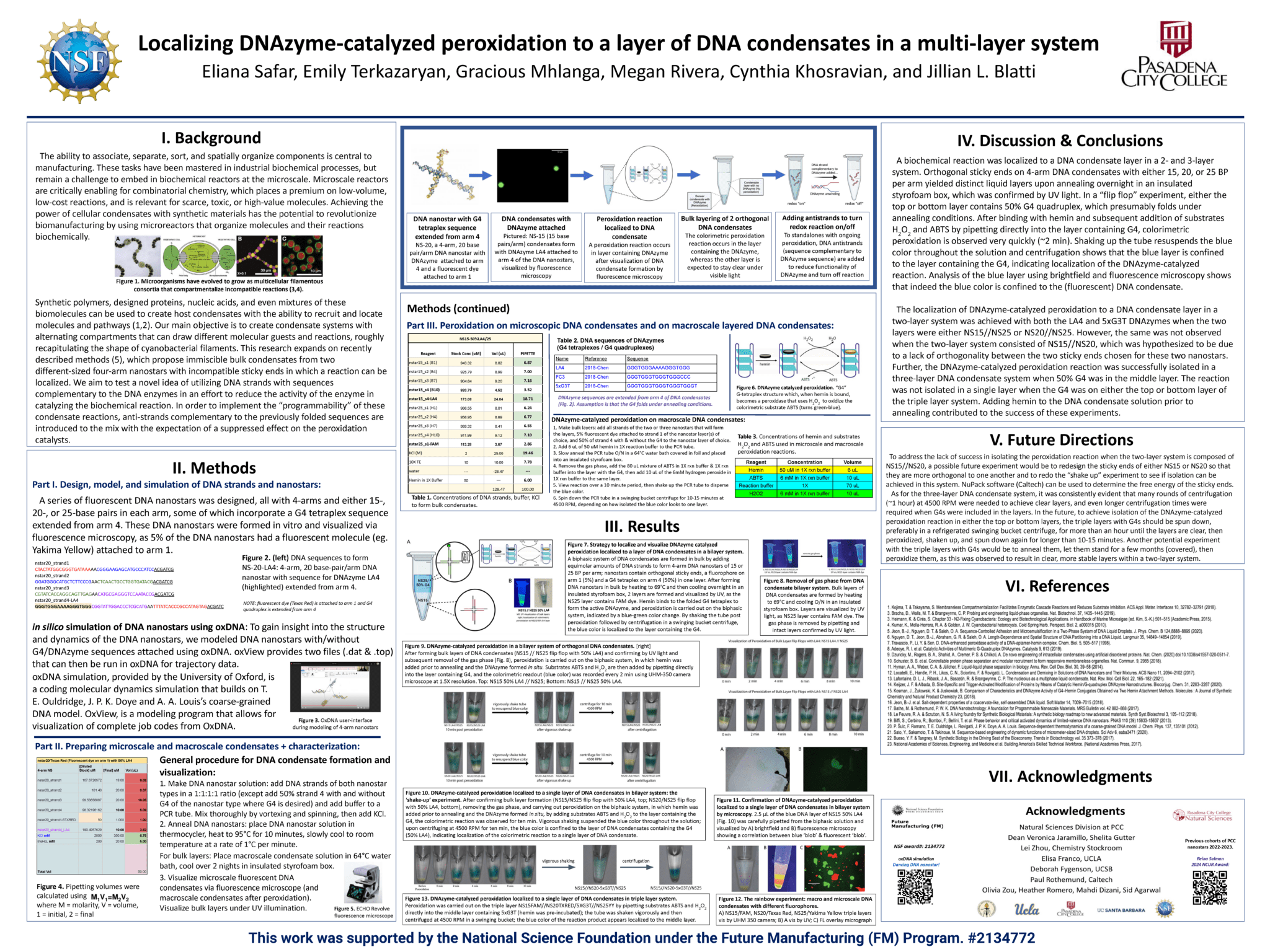
“The main purpose is to share the amazing results we achieved this summer,” said Terkazaryan. “We want to present our results to show the rest of the scientific community here at PCC and further applications of these research methods in the future.
“My goal is for every summer, this research helps the next group of students,” she said. “And it’s really exciting to know that the work I’ve done has helped further the goals of Dr Blatti’s program and what she helped accomplish. It’s great to be part of that legacy.”
Another poster ‘The Art of Molecular Programming using DNA’ focusing on laboratories based on the PCC Nanostars’ research over a 6-week period was presented by Reina Salman, a PCC Nanostar and learning assistant for Dr. Blatti.
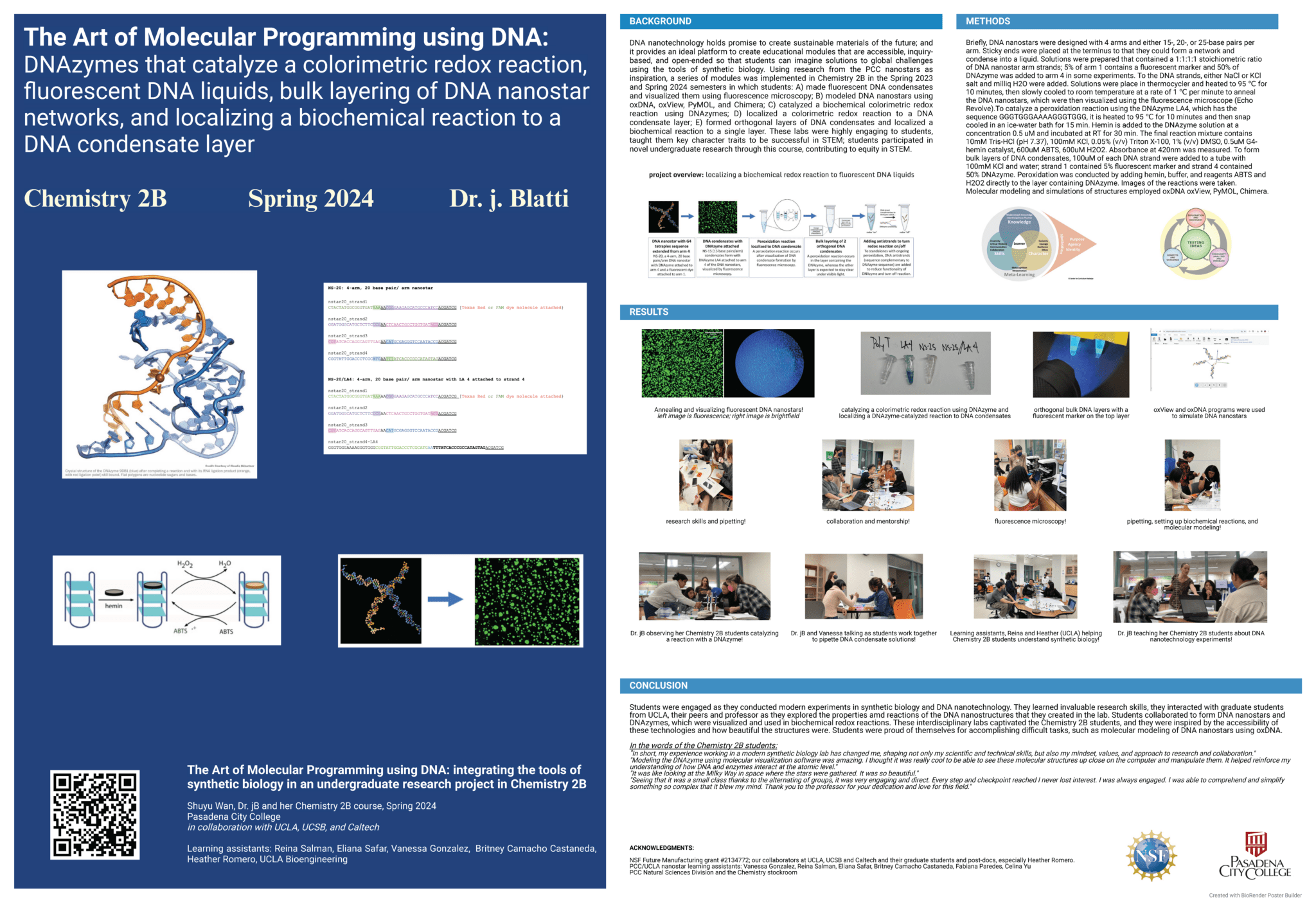
“We worked with some mentors and collaborated with them from UCLA as well, and what they did was forming DNA Nanostars, which are these solutions of nanomaterial, specifically, DNA formed really complicated nanostructures,” Salman said. “Taking a teaching role and the research that I had previously conducted myself, it just became a rewarding experience for myself and for the students that were involved. We worked on many different subtopics that summer, but we focused more on fundamentals and building blocks of the core extent of our research, and then learned how to package that, make it again, and share that with other age groups and learning abilities.
“I hope to improve equity in STEM,” she said. “I’ve been invited to be panelists before at PCC spy day and I was also part of the science girls outreach day. And I think my experience in these workshops and facilitating these activities with younger students really transforms everyone’s experience. So encouraging other people to specifically minority groups and women demographics to pursue STEM is part of my goal.”
Nanostars Gracious Mhlanga and Megan Rivera’s poster showcased several sets of experiments the Nanostars did in the summer using microscale DNA condensates, the G-quadruplex 5xG3T with its toehold, and a complementary anti-strand.
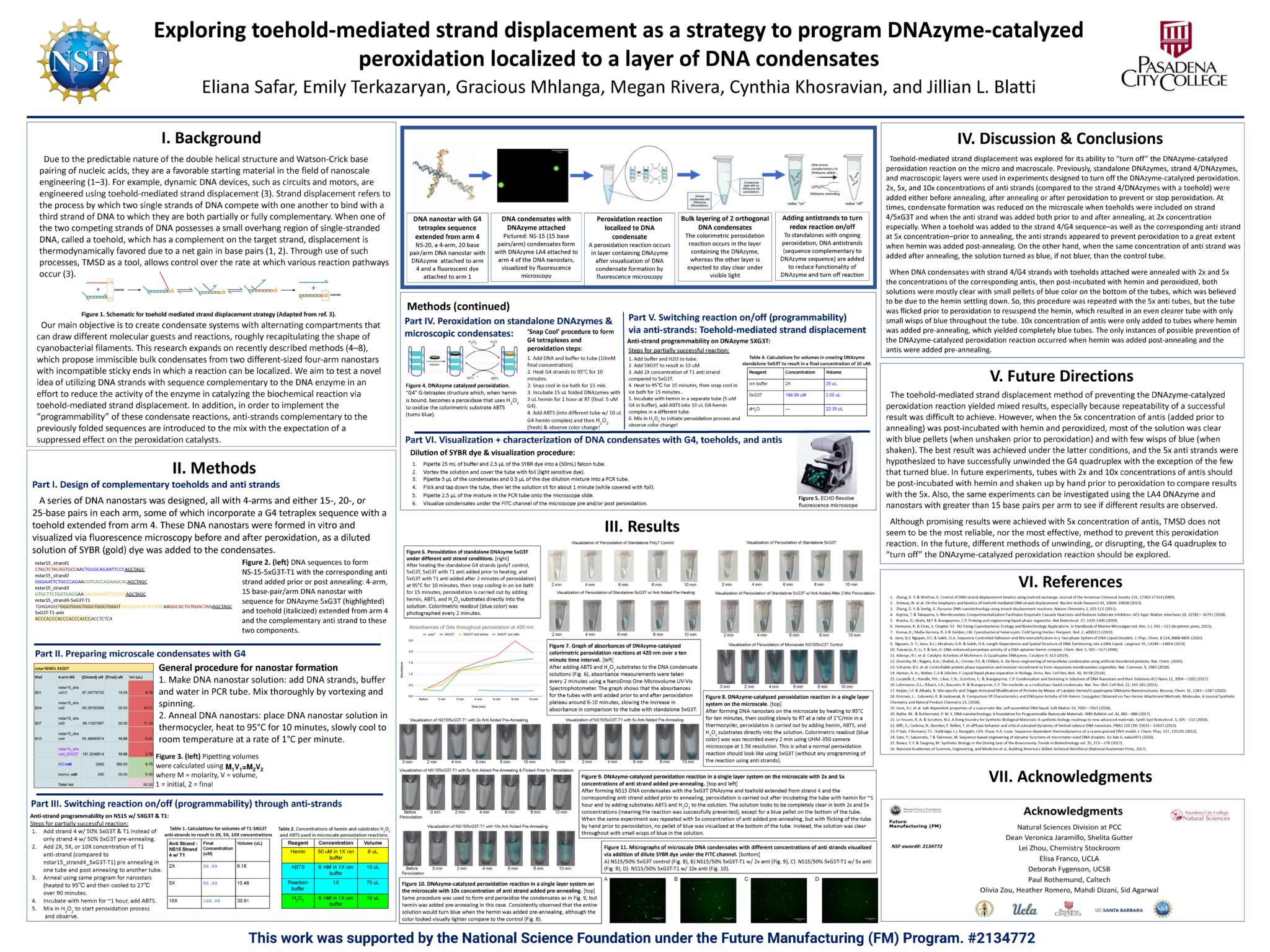
“I hoped to benefit from the poster session, by getting the chance to showcase and explain the research we did over the summer,” said Mhlanga.
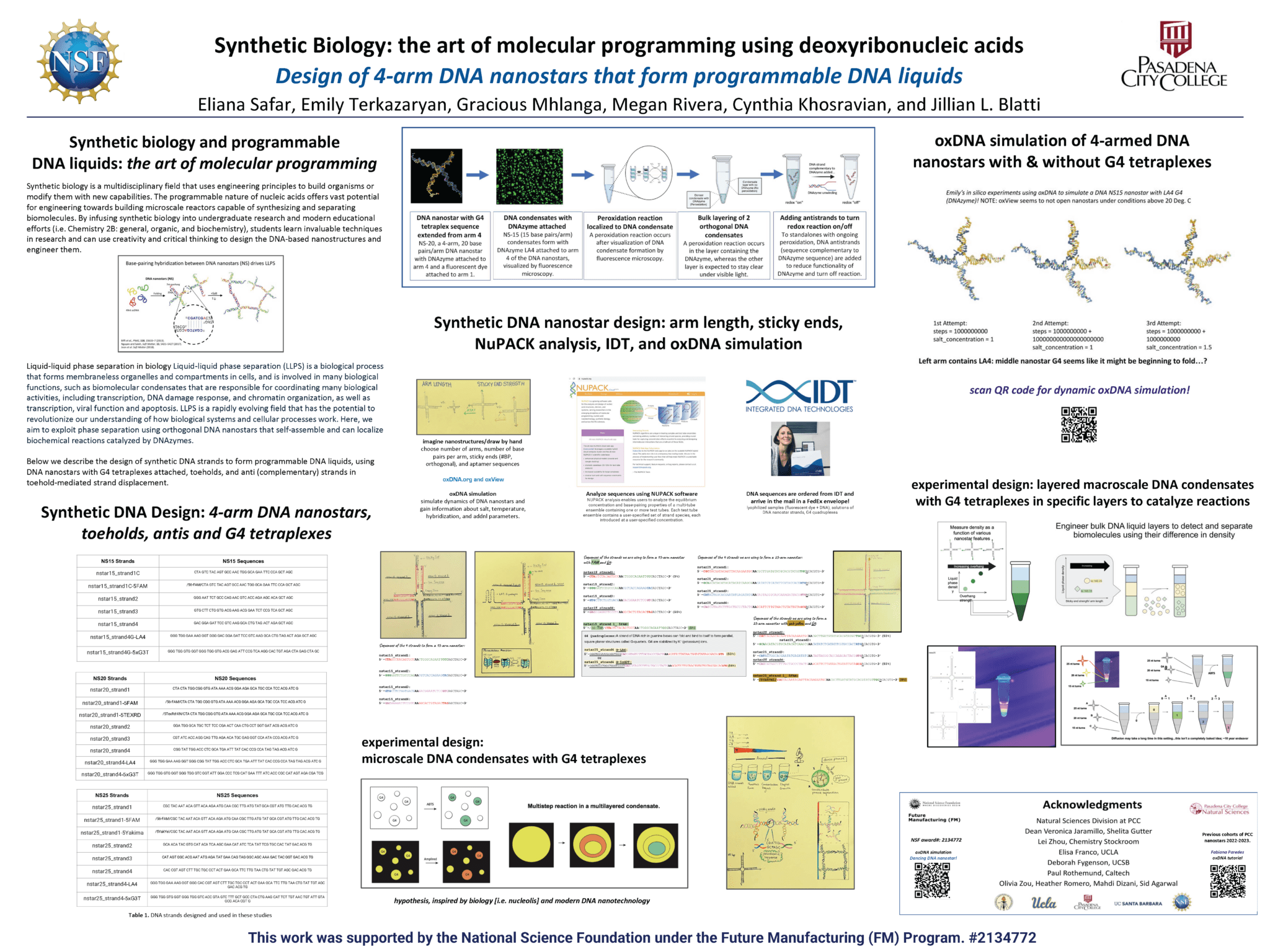
“The Nanostar’s will benefit greatly from familiarizing the public about our study and maybe get other people interested in helping the research which is still ongoing,” said Cynthia Khosravian. “I had a lot of fun reviewing everything we did throughout the research program. It was a good way to really look back and extract as much away from the experience as possible. By explaining our research purpose, scope, and prospects I was able to remember important preliminary aspects of the research I myself had forgotten. I loved seeing people’s faces brighten up as I explained possible applications of DNA condensates in the pharmaceutical world.”
Finally, we Sarah Holguin, Daphne Kallianiotis, and Destiny Mejia’s poster on DNA nanotechnology and microplastics in the environment.
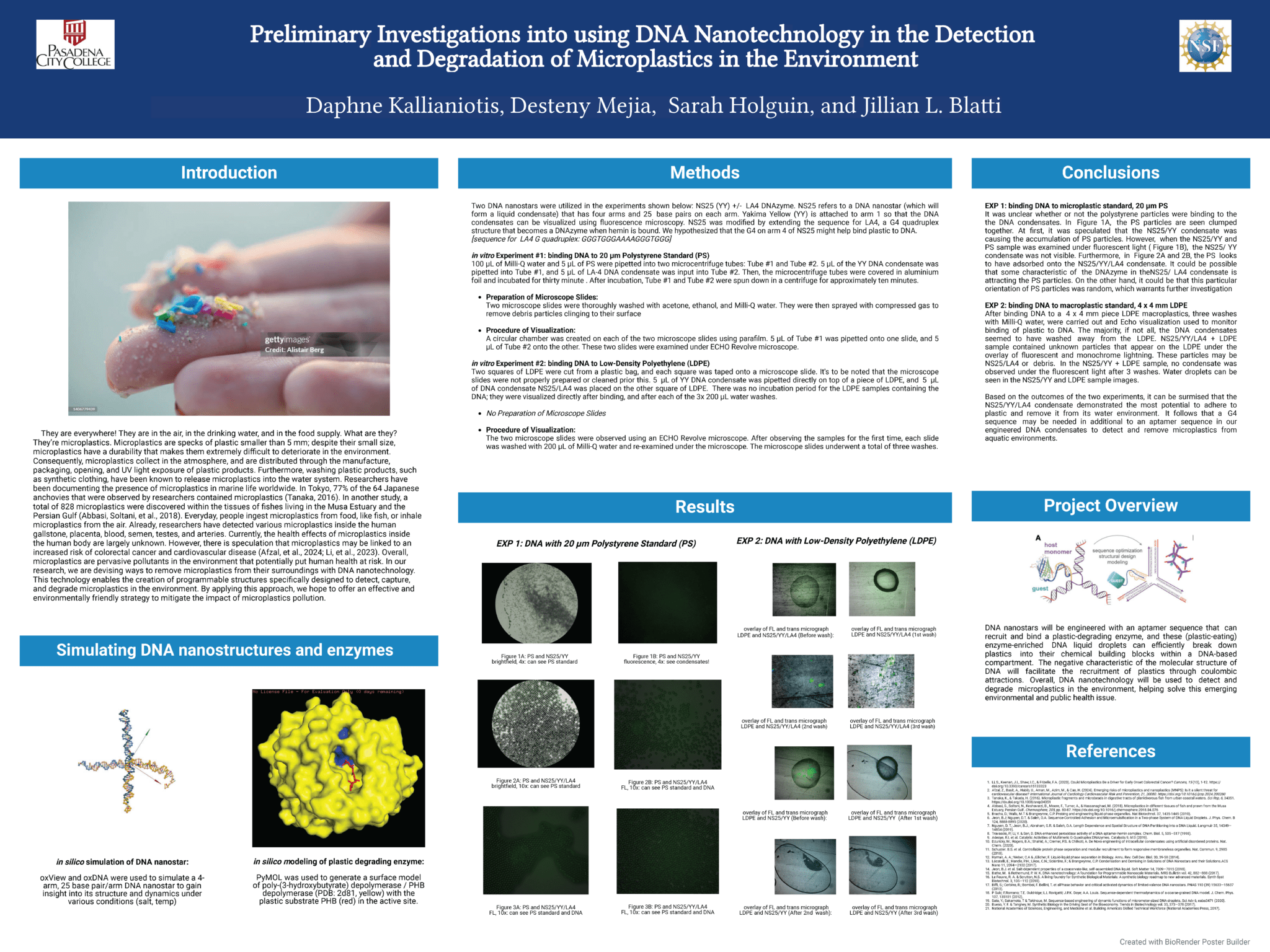
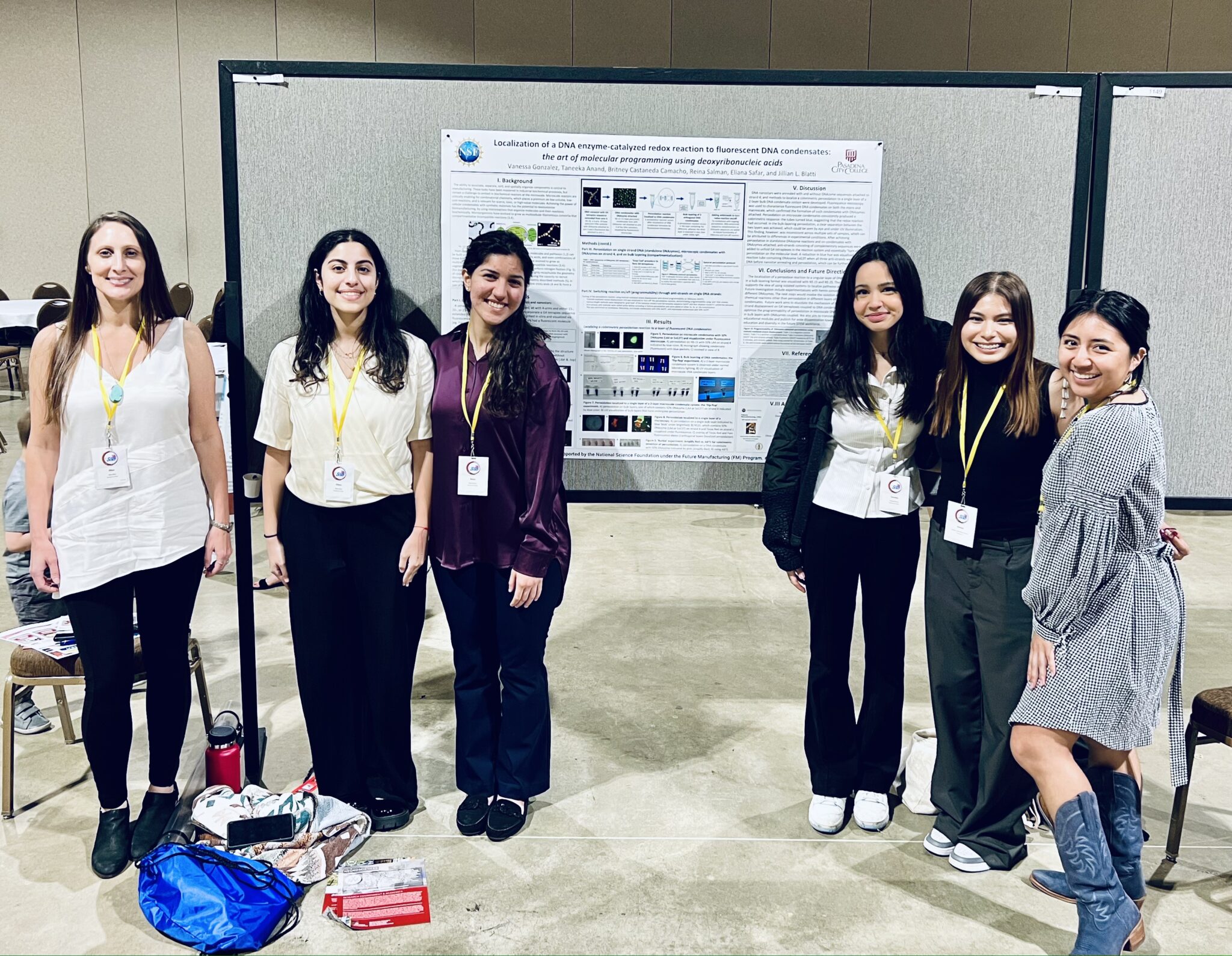
In addition to the Poster Sessions at PCC, the Nanostars also made their presentations for the Council of Undergraduate Research. Reina Salman, in particular among the Nanostars, received an award within the Council’s Engineering Division for her 60-second video presentation.
- Warriors strike down Lancers in tense game - April 15, 2025
- Marvel is born again thanks to Daredevil’s new gritty show - April 2, 2025
- Were you in a hurry? Here’s a guide to the cliques from Club Rush - March 12, 2025
